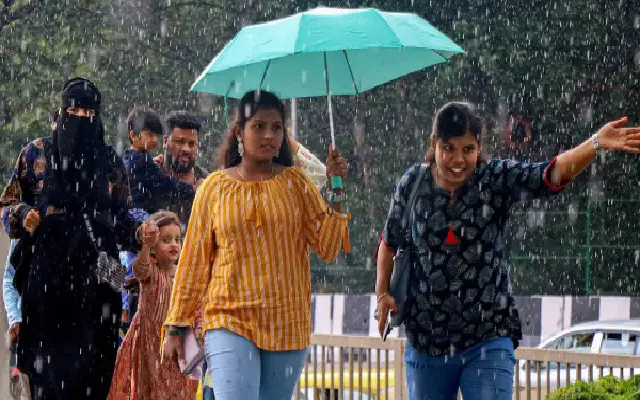
In a nutshell, after the Supreme Court’s judgement on Aadhaar, the project is Idhar Udhar
A Constitution bench led by the Chief Justice of India, who is on the verge of retirement, went into various aspects of the Aadhar Act – its constitutional validity based on its objects and mechanisms, data privacy and safety, and the need for its use to establish Indian identity – raised by petitioners Justice KS Puttaswamy (Retd) and others in Writ Petition Civil No: 494 of 2012 and subsequent petitions.
The Court came out with 4-1 majority judgement in favor of of the constitutional validity of the Act, accepting that the way it was passed as a Money Bill was in conformity with the Constitution’s scheme, but laid down ‘reasonable restrictions’ which effectively nullified the NDA Government’s intent. They are now scrambling to see if they can bring in curative legislation according to media reports.
If read in full, the verdict might appear favorable to the NDA Government which rammed it through parliament (not parliament actually, just the Lok Sabha) as a money bill. The Rajya Sabha which was inimical to them at the time, had no say. This brought forth scathing observations in the dissenting judgement of Justice Chandrachud.
The Court has played a delicate balancing act – they could not have really struck it down, given the amount and time invested in the system and its downstream benefits – from statistics to direct benefit transfer, which was the original intent of the scheme set up by Nandan Nilekeni under the UPA. The apex court has effectively de-linked Aadhaar from everything except welfare benefits and for filing income tax (IT) returns. Private entities cannot demand or use the Aadhaar for any purpose like they were doing till date.
In the bargain, the Court authorized its linking to the PAN Card that some if not all have – I don’t see it servee any purpose as the documentation required to obtain a pan is the same as that to obtain an Aadhaar Card – other having your finger prints on record as the PAN does not carry that bio metric information and in turn to file Income Tax records. In essence the Aadhaar Card is compulsory for Tax filers and Tax beneficiaries (Benefits and subsidies are paid out from the Taxes)
Where it has hit the government the most is in the striking down of the requirement of linking Aadhaar to bank accounts and mobile telephone nos, something which the government was very eagerly pushing through with threats of disconnection and a freeze of funds, until the Supreme Court stopped them with an interim order. Section 57 of the Aadhaar Act refers to the use of Aadhaar data by any “body corporate or person” to establish the identity of an individual. Justice Sikri, in his judgment, found this section to be unconstitutional. Now what happens to the data collected is a million Aadhaar question especially as the Supreme Court has limited storage of authentication records to a maximum six months.
Interestingly, while Aadhar will no longer be compulsory for enrollment for Government exams conducted by the Ministry of Education through its various extensions, or for that matter competitive exams, children it said, cannot be enrolled into the Aadhaar system itself without their parent’s consent. What happens to orphans it does not say. The Court in its majority judgement goes on to aver that children should be given the option to exit the Aadhaar system on attaining majority – The irony is that will need to re-enroll if they require any benefit including LPG Subsidy!
But the whopper was reserved for National Security – the national security exception has been struck down. Agencies will require a judicial warrant to access data of a person under investigation. Section 33 of the Aadhaar Act refers to disclosure of information in certain cases. The Supreme Court has read down Section 33(1) while striking down 33(2). Section 33(1) allows disclosure of information, including identity and authentication records, if ordered by a court not inferior to that of District Judge. Reading down this sub-section, the SC has said individuals should be given the opportunity of hearing.
On Data Protection and Safety, one of the key issues that petitioners took up, the Supreme Court limited storing of authentication data to six months, saying that provision to keep such data for five years is bad in law while Section 2(d) of the Aadhaar Act was read down to exclude metadata of transactions. The Court also advised the government to formulate a data protection law and regulatory framework ASAP.
The dissenting but interesting Judgement
But the most interesting conclusions came from the dissenting judgement of Justice D.Y Chandrachud. The judgement found the project itself and its parent Aadhaar Act unconstitutional. While delivering his judgement he was scathing in his criticism of the government’s disregard of its interim orders especially regarding linking of Aadhaar for various services of private players. “When the Aadhaar Act was notified on 25 March 2016, the interim directions issued by this court were in operation. Was it then open to government to launch upon a virtual spree of administrative notifications making Aadhaar a mandatory requirement of virtually every aspect of human existence from birth until death?“
Primarily he viewed the passage of the Aadhar Act as a money bill as a fraud upon the Constitution. He observed that contrary to the government’s viewpoint, the Aadhaar Act encompassed much more than mere use of government funds – territory reserved for a money bill. Contrary to how it has been projected by the government, Justice Chandrachud found that the Act primarily involved the creation of a national identity for multiple purposes. “The Aadhaar platform is not a social welfare benefit in itself. Essentially, what it seeks to achieve is to provide a unique identity to every resident.“ This, in turn, would also involve aspects such as authentication of information, obligations on requesting entities, consent, creation of a statutory authority (UIDAI), security, confidentiality, storage and disclosure of information as well as offences and penalties. Therefore, it could not be termed a Money Bill. “In its primary focus and initiatives, the [Aadhaar] law traverses beyond the territory reserved by Article 110 for a Money Bill.“ “The Lok Sabha cannot introduce and pass a legislative measure in the garb of a Money Bill… Superseding the authority of the Rajya Sabha is in conflict with the constitutional scheme and the legitimacy of democratic institutions. It constitutes a fraud on the Constitution…
… The ruling party in power may not command a majority in the Rajya Sabha. But the legislative role of that legislative body cannot be obviated by legislating a Bill which is not a Money Bill as a Money Bill. That would constitute a subterfuge, something which a constitutional court cannot countenance …
… Differences with another constitutional institution cannot be resolved by the simple expedient of ignoring it. It may be politically expedient to do so. But it is constitutionally impermissible. This debasement of a democratic institution cannot be allowed to pass. Institutions are crucial to democracy. Debasing them can only cause a peril to democratic structures.“
On Privacy, the justice had more serious concerns. “The threat to privacy arises not from the positive identification that bio-metrics provide, but the ability of third parties to access this in an identifiable form and link it to other information, resulting in secondary use of that information without the consent of the data subject. This erodes the personal control of an individual over the uses of his or her information. The unauthorized secondary use of bio-metric data is perhaps the greatest risk that bio-metric technology poses to informational privacy.”
Keeping in mind the recent Facebook controversy on profiling and the use of that information to influence individuals to act in a particular way, Justice Chandrachud found that the Aadhaar project wanting on this count. “… Thus, linking Aadhaar with different databases carries the potential of being profiled into a system, which could be used for commercial purposes. It also carries the capability of influencing the behavioral patterns of individuals, by affecting their privacy and liberty. Profiling individuals could be used to create co-relations between human lives, which are generally unconnected traces of Aadhaar number are left in every facet of human life, it will lead to a loss of privacy.”
The dissenting judgement was also concerned about technology failure causing exclusion. “Every conceivable facility can be brought under the rubric of Section 7. From delivery to deliverance, almost every aspect of the cycle of life would be governed by the logic of Aadhaar.“ “Our quest for technology should not be oblivious to the country’s real problems: social exclusion, impoverishment and marginalization ….There exists a digital divide. To railroad those on one side of that divide unconcerned about social and technical constraints which operate in society is to defeat the purpose of social welfare …
… The Aadhaar project has failed to account for and remedy the flaws in its framework and design which lead to serious issues of exclusion. Dignity and rights of individuals cannot be based on algorithms or probabilities. Constitutional guarantees cannot be subject to the vicissitudes of technology.“
The judge also felt that in the absence of a strong data protection regulatory frame work, the Act fails to pass the test of constitutional validity. He held that “Data protection requires a strong regulatory framework to protect the basic rights of individuals. The architecture of Aadhaar ought to have, but has failed to embody within the law the establishment of an independent monitoring authority (with a hierarchy of regulators), along with the broad principles for data protection.“ “In the absence of a regulatory framework which provides robust safeguards for data protection, the Aadhaar Act does not pass muster against a challenge on the ground of Article 14. The law fails to meet the norms expected of a data protection regime which safeguards the data of 1.2 billion Indians. The absence of a regulatory framework leaves the law vulnerable to challenge on the ground that it has failed to meet the requirements of fair institutional governance under the rule of law…
… The absence of a regulatory framework renders the legislation largely ineffective in dealing with data violations. Data protection cannot be left to an unregulated market place. Nor can the law rest in the fond hope that organized structures within or outside government will be self-compliant. The Aadhaar Act has manifestly failed in its legislative design to establish and enforce an autonomous regulatory mechanism. Absent such a mechanism, the state has failed to fulfill the obligation cast upon it to protect the individual right to informational self-determination.“
These are interesting and valid observations, which will not be considered in any government scheme concerning citizens because the views are in the minority and are not in conformance with Government thinking on the subject for a variety of reasons. As the Justice says towards the end of his judgement “The mere existence of a legitimate state aim will not justify the means which are adopted. Ends do not justify means, at least as a matter of constitutional principle.“


















